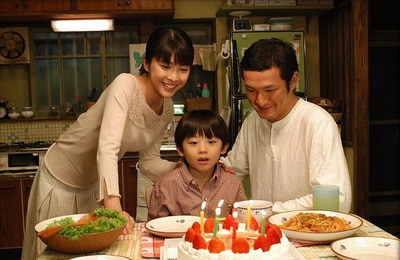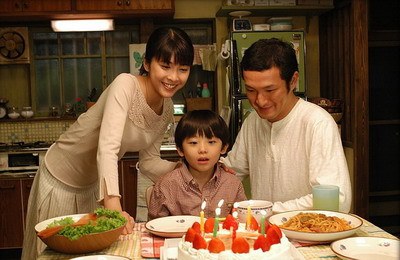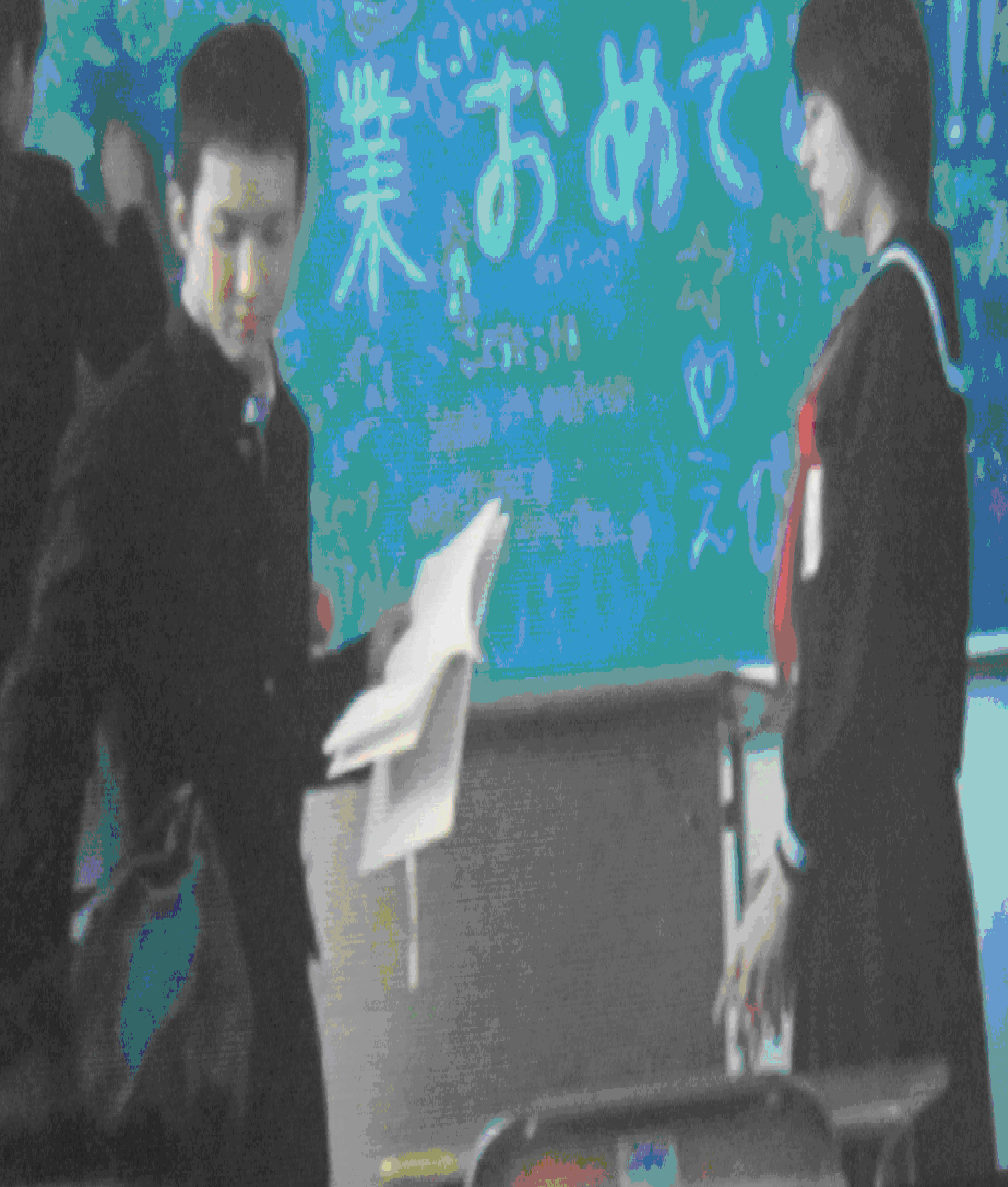
That's absolutely true. And if we say, as Lenin said, "cinema is the most important art of all arts," then...I will come with the rain.It has fulfilled its "sacred and noble" mission. The film has given viewers a beautiful picture of the Japanese human spirit. On another level, in a modern world where tradition is increasingly dominant, and cinema is considered the most effective artistic tool, a film like this...I will come with the rain.This is always a useful lesson, not only for Japanese filmmakers, but also for all genuine filmmakers around the world.
From the early decades of the 20th century, the cinema of the "Land of the Rising Sun" was known to Western countries through the names of leading filmmakers such as Kinugasa, Naruse, Mizoguchi, Ozu, Isao Yukisada, and Masanori Murakami. It was a national cinema that was also very modern. Watching Japanese films, few could fail to recognize a certain beauty deep within the human soul. This beauty lies in the spirit of Bushido, in the subtlety, intelligence, and wisdom accumulated over generations, in self-confidence and courage, and especially in sacrifice, altruism, and the appreciation of love and family. The press and media discussed this extensively during and after the earthquake and tsunami disaster of March 2011. To fully address this issue would require extensive research. In this short article, we wish to analyze only some of the factors that contributed to the film's success.I will come with the rain.by young director Abuhiro Doi. Hopefully, the lessons learned from this will also provide young Vietnamese filmmakers with the necessary insights.
The first factor, in our opinion, that makes director Nobuhiro Doi's films appealing to audiences, not only in Japan, probably lies in the profound humanistic elements embedded in every detail of the work. In fact, the film's story...I will come with the rain.It's very simple. The story mainly revolves around the life of a small, ordinary Japanese family of three: Takumi (the father), Mio (the mother), and their son Yuji. The film opens with a scene of a beautiful, dreamlike house nestled beside a lake in the forest. Yuji, now a cheerful 18-year-old, receives a gift his mother ordered 12 years ago, delivered directly by the bakery owner. During a conversation between Takumi and Yuji, a magical memory from when Yuji was six years old is recalled: after giving birth to her first child, Yuji, his mother contracted a mysterious illness and passed away. Before returning to live on the planet Akaibu, she promised to return to live with her husband and son for six weeks at the start of the first rainy season. And she did return. It is during this surprising and unexpected return that many previously unknown secrets, steeped in human kindness, are revealed through Takumi's account. By choosing this narrative perspective, the film has contributed to illuminating the love story, the beauty of the soul, and the selflessness of each character in the work, and has also made the film's story more "multi-layered and complex".
Takumi and Mio fell in love when they were classmates at a high school in Tokyo. Their love was discreet, gentle, and romantic, like any teenage romance. They both fell in love at first sight, but because of their shy natures, their love remained hidden in the depths of their hearts. On the day they were about to part ways, risking never seeing each other again, a miraculous "excuse" brought them together: Takumi "accidentally" forgot his pen after writing farewell messages in his school notebook at his girlfriend's request. And despite many obstacles, their love ultimately brought them back together. The symbol of a whole forest of sunflowers blooming in vibrant yellow on the day they reunited affirmed that true love is always immortal. A wedding took place. Happiness filled the young couple's home when their first and only child was born. Then misfortune struck Mio: she contracted a terminal illness and passed away shortly after giving birth to Yuji, at the age of 28. Yuji's heart-wrenching question to Mio when his mother's ghost returned: "Did you die because of me?", the symbolic image of the "clover" that Yuji diligently searched for in the hope of reuniting with his mother, the image of the planet Akaibu in the album Mio left behind, the incessant rains, the "rain-praying dolls" that Yuji placed everywhere—in the classroom and at home—hoping for rain to bring his mother back… All these details and images are imbued with the beauty of the Japanese spirit.
Based on the main foundation of the original work.I will come with the rain.With a central plot revolving around a deceased person returning to live with her husband and child for six weeks, Nobuhiro Doi's film incorporates several creative elements in its story structure, setting, characters, and narrative style. Regarding the characters, Dr. Noguchi, who monitors and advises Takumi on his health, replaces the teacher named Nombre from the novel. This replacement is more convincing for viewers who want to see that such a miracle can still exist in life: when love and desire reach their limit, a "miracle" can still bring the dead back to life. Although skeptical of this seemingly "unscientific" story, Dr. Noguchi consistently assures Takumi that "it can still happen." Compared to the novel, the film also creates the character of Aya, an incredibly lovable classmate, the only one who knows her friend's "secret," and who has repeatedly spoken up to get the teacher to allow Yuji to return home to see his mother...
Regarding the art of setting construction, it's no coincidence that director Nobuhiro Doi deliberately created a completely separate space for Takumi's family: a house by a lake in the middle of a forest. All the secrets about the "resurrected dead" are thus kept completely secret. In the original literary work, Takumi's family lives normally in a bustling neighborhood, and the "ghost" Mio lives, moves around, and talks with other ordinary people (especially with teacher Nombre). In the film, Mio's interactions are minimized. Upon returning from the planet Akaibu, besides Takumi and Yuji, Mio only meets Tagase, Takumi's colleague (to ask for their care while she leaves), and the bakery owner (to order a birthday cake for her son until he turns 18). This creative approach is easily accepted by viewers. Furthermore, the director's inclusion of rain-praying dolls, a unique Japanese custom that Yuji hangs throughout the classroom and at home, hoping for a long rainy season so his mother will remain, also speaks to the beauty of the Japanese spirit. Even more special, the creative setting of Takumi and Mio's first meeting amidst a field of golden sunflowers evokes incredibly special emotions in the viewers. This is the difference between literature and film. We believe Doi is even more successful through its uniquely original storytelling.
The film's storyI will come with the rain.The story is actually quite simple, but the way it's told is multi-layered, creating many surprises for the viewer. Compared to the novel, where the story is told from only two perspectives (Takumi's perspective and Mio's perspective, through the letter she left behind), the narrative structure in the film is more complex. The film tells the story from at least three perspectives: one story is told from the director's and camera's point of view, focusing on what happens in the present, at the time of Yuji's 18th birthday; the second story is told from Takumi's perspective, about the love between the two when Mio returns after her death, having completely lost her memory; and the third story is told from Mio's diary after she returns to Planet Akaibu, revealing details that were omitted from their love story throughout their high school years. Without this unique narrative approach, the film's story would have been much more complex.I will come with the rain.It would be monotonous and difficult to convince the audience. Alternatively, the film would struggle to create surprises, an element considered crucial in a narrative work, even if this is a "visual narrative text."
ScenarioI will come with the rain.While it contains fantastical elements (the dead coming back to life), it absolutely avoids leaving the viewer with any sense of unreality. To achieve this, Nobuhiro Doi meticulously planned everything. First, he chose the setting of the three characters' shared house in the middle of a forest, next to a large lake, with no one passing by. This setting allows Mio to return after her death, as Takumi and his son are the only witnesses to a deceased person's potential resurrection. Furthermore, the father and son's desire to reunite with their loved ones is another important reason why Mio's return is plausible. In his storytelling, Nobuhiro Doi consistently maintains ambiguity between the real and the virtual worlds: the story in the virtual world is only connected to the real world through details involving only one person (besides Takumi and his son), Nagase, Takumi's colleague and girlfriend. As the day approached when she had to return to Planet Akaibu, worried about the lives of Takumi and his son without a woman's presence, Mio unexpectedly arranged to meet Nagase at a deserted café with almost no one coming in. Viewers were momentarily startled, along with Takumi's kind friend, upon first encountering a deceased acquaintance who had suddenly come back to life. But only for a second. Then everything quickly returned to normal. Two people from two different worlds (real and virtual) completed a conversation just like in real life. Another character (not in the novel) – the bakery owner Mio had been ordering a birthday cake for her son for 12 years on the day she was about to return to Planet Akaibu – showed no surprise, having never met Mio. His only surprise was that this "strange customer" had ordered a birthday cake for her son for 12 years. Another character is Dr. Noguchi, who treats Takumi and only learns about Mio's return through Takumi's stories. The director cleverly avoided having the doctor—a scientist who understands perfectly well that the dead cannot "come back to life"—meet Mio directly. With his kind nature, the doctor asserts that the story of the dead returning is impossible, but to cheer Takumi up, he believes the story is true, at least in Takumi's own world.
The beauty of the Japanese spirit is revealed through every detail of the film.I will come with the rain.It exists not only within Takumi's own family through a "fantasy world," but also in real life with the characters surrounding that "fantasy world": Nagase (his colleague), Noguchi (the doctor), especially his kind girlfriend Aya, and Yuji, his only classmate to whom he reveals the secret about the return of his deceased mother. All of them radiate the gentle, profound beauty of the Japanese people.I will come with the rain.There are absolutely no "sex scenes," gimmicks to attract viewers, or special effects. Even the exaggerated negative characters often seen in many Vietnamese films, including popular South Korean films recently shown on television, are completely absent.I will come with the rain.There is only one positive character arc: people with a "pure," "innocent," and "selfless" beauty, giving viewers the feeling that evil and wickedness have no basis in existing in this world. Furthermore, the film captivates viewers through its picturesque cinematography, the director's compelling storytelling from beginning to end, and the masterful acting of the three main actors: Yuko Takeichi (as Takumi), Shido Nakhamura (as Mio), and Akashi Takei (as Yuji). These elements highlight the beauty of the Japanese soul in everyday life. And above all, after watching this film with its "fantasy" element (the dead coming back to life), one feels no fear. On the contrary, in the viewer's mind, the "fantasy" story could still be true. Who in this life hasn't dreamed of having a beautiful experience like what unfolds in Nabuhiro Doi's story? Who hasn't once dreamed of a miracle that would bring their dearest deceased loved one back to life? Cinema, and art in general, is the bridge that helps people realize that "unrealistic dream," even if it's impossible in reality. On another level, we also see that a good film doesn't necessarily need "thrilling" themes, beautiful actors with "racy" scenes, or expensive special effects. A good film is sometimes as simple as everyday life. The important thing is that it brings viewers "beautiful dreams" and helps people live "beautifully." I dream that one day Vietnamese cinema will be able to make films like that.

A family meal after Mio returned from her Akaibu career to live with her husband and child.

A picture of Takumi and Mio during their high school days.
Author:Tran Hinh
Newer news
Older news